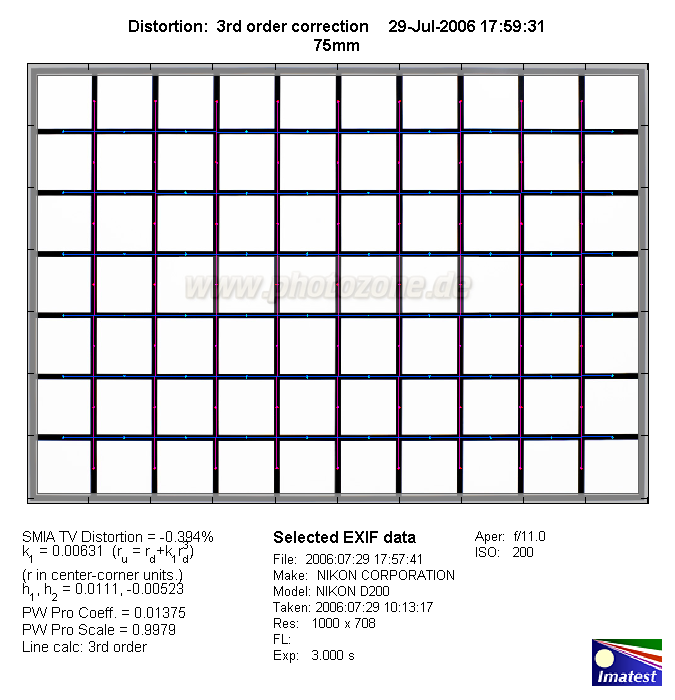|
Nikkor AF 75-300mm f/4.5-5.6 - Review / Test Report - Analysis |
|
Lens Reviews -
Nikon / Nikkor (APS-C)
|
|
Page 2 of 3
Distortion
Despite its relatively ambitious 4x zoom ratio the lens exhibits only a marginal
degree of barrel distortion at 75mm and slight pincushion distortion towards
the long end of the zoom range.
|
Move the mouse cursor over the focal length text marks below to observe the respective distortion
|
| 75mm |
200mm |
300mm |
|

|
The chart above has a real-world size of about 120x80cm.
Vignetting
The AF 75-300mm is a full frame lens so on an APS-C DSLR it can take
advantage of a sweet spot effect and it shows - the lens is basically
free of vignetting at 75mm and 200mm. At 300mm vignetting is a little
more pronounced at f/5.6 but even here it should be rarely field-relevant.

MTF (resolution)
The lens showed a rather mixed behavior in the MTF lab. At 75mm the resolution
figures are great straight from the max. aperture setting. At 200mm there's
already a drop in quality primarily at the image borders which are still good
to very good though.
Unfortunately things aren't all that rosy anymore at 300mm especially at f/5.6 where
the quality falls apart completely. The results are very soft here. It's
quite obvious that the lens has an achromatic characteristic at 300mm because
the different colors of the spectrum have different focus points which is surely
one cause for the softness. At f/8 the quality increases dramatically but only
in the center of the image. It takes f/11 for the borders to recover to good
levels.
(Note: I repeated the measurements at 300mm to confirm the findings)
Please note that the MTF results are not directly comparable across the different systems!
Below is a simplified summary of the formal findings. The chart shows line widths per picture height (LW/PH) which can be taken as a measure for sharpness.
If you want to know more about the MTF50 figures you may check out the corresponding Imatest Explanations
Chromatic Aberrations (CAs)
Chromatic aberrations (color shadows at harsh contrast transitions) are
generally well controlled with an average CA pixel width at or below 1px
at the image borders.

|